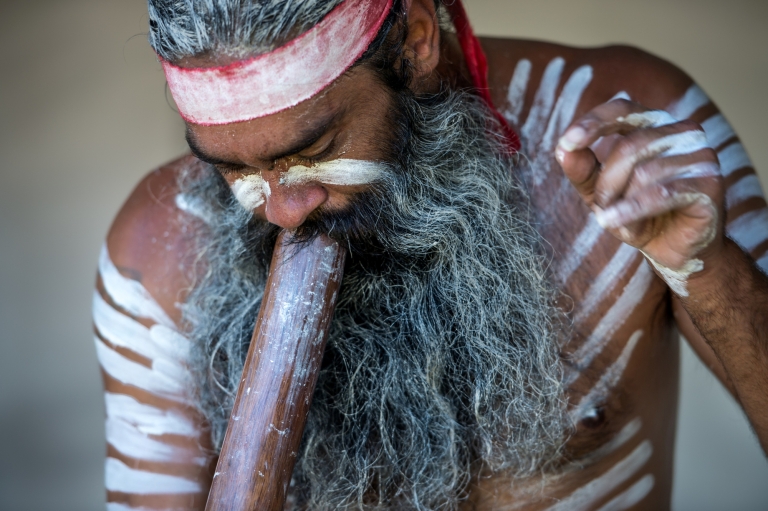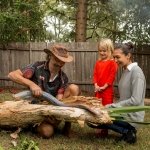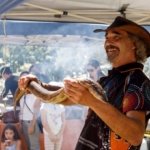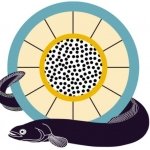Kicking off this year’s Aboriginal Cultural Calendar is our annual Eel Festival on Sunday 3 March at Elizabeth Farm which celebrates the seasonal migration of eels, or burra in local language, into Darug Country.Along with live music and dance performances, weaving and painting workshops and diverse conversations around the yarning circle, there will be opportunities to learn about traditional cooking techniques and sample tastings of freshly cooked eel and smoked eel.
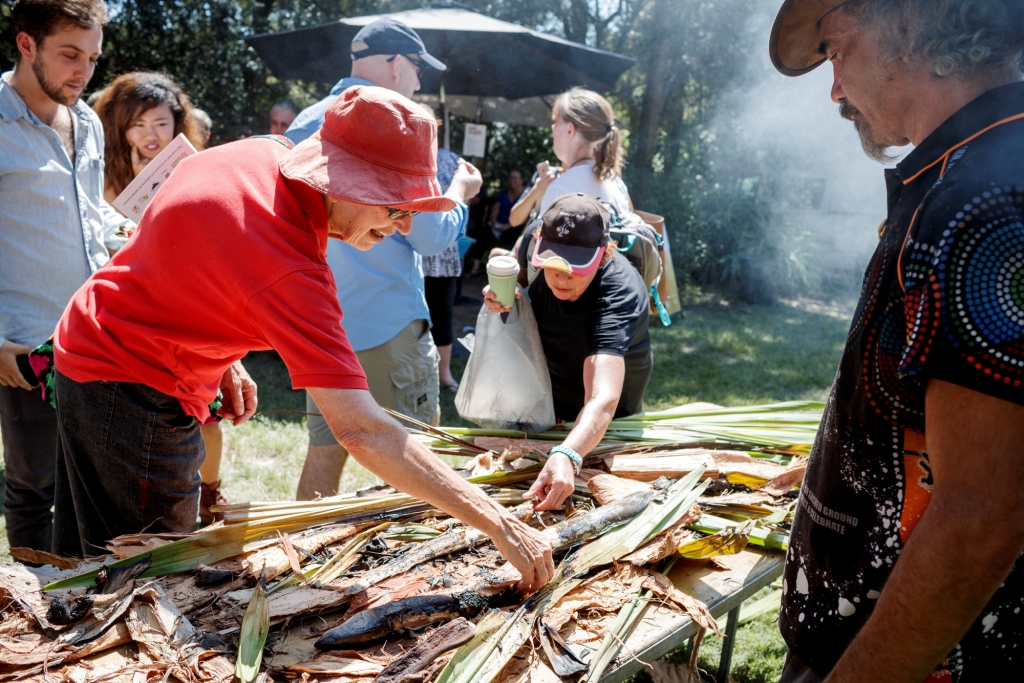
Eel Festival visitors sample freshly roasted eel prepared by Fred Lindsey © James Horan for Sydney Living Museums
Embedded in place
For those not aware, Elizabeth Farm was built in 1793 near the Parramatta River on Darug country, traditional home to the Burramatta people. Parramatta (which was originally named Rose Hill by colonisers, until 1791) is an anglicised form of Burramatta, which in simple terms, means a place of eels. Eels are an important food tradition for many Aboriginal people and hold strong spiritual meaning in many Aboriginal cultures.
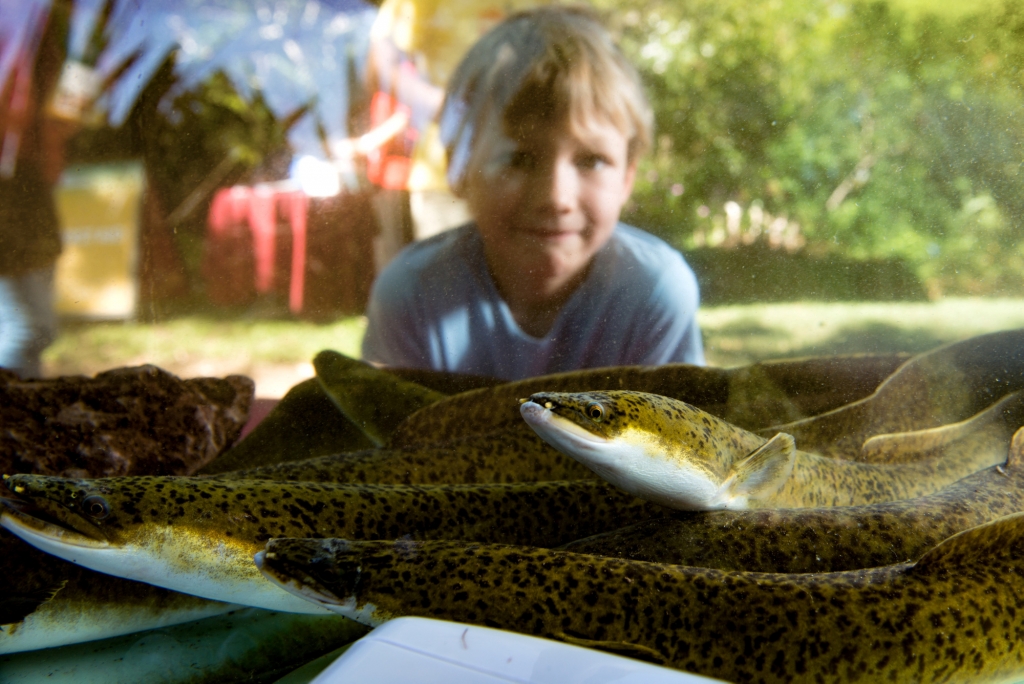
Festival visitor Bruce Zellie with eels in the aquarium at the 2018 Eel Festival at Elizabeth Farm Photo © Alex Wisser for Sydney Living Museums
Local rivers throughout the Sydney region teemed with eels in the late summer and autumn, which Aboriginal people would catch with woven or wooden traps. David Collins noted that in autumn, Darug people would
“resort at a certain season of the year [autumn] to the lagoons, where they subsist on eels which they procure by laying hollow pieces of timber into the water, into which the eels creep, and are easily taken”. [1]
Eels are no longer fished from the Parramatta River (except by the odd recreational angler, perhaps), however fresh eels can be caught by licenced fishermen in the Hawkesbury river, north-west of Parramatta. Local eel fisherman Paul Aquilina will be on hand to explain the process he uses to provide eels for the restaurant trade, which involves catching and purging the eels down river.
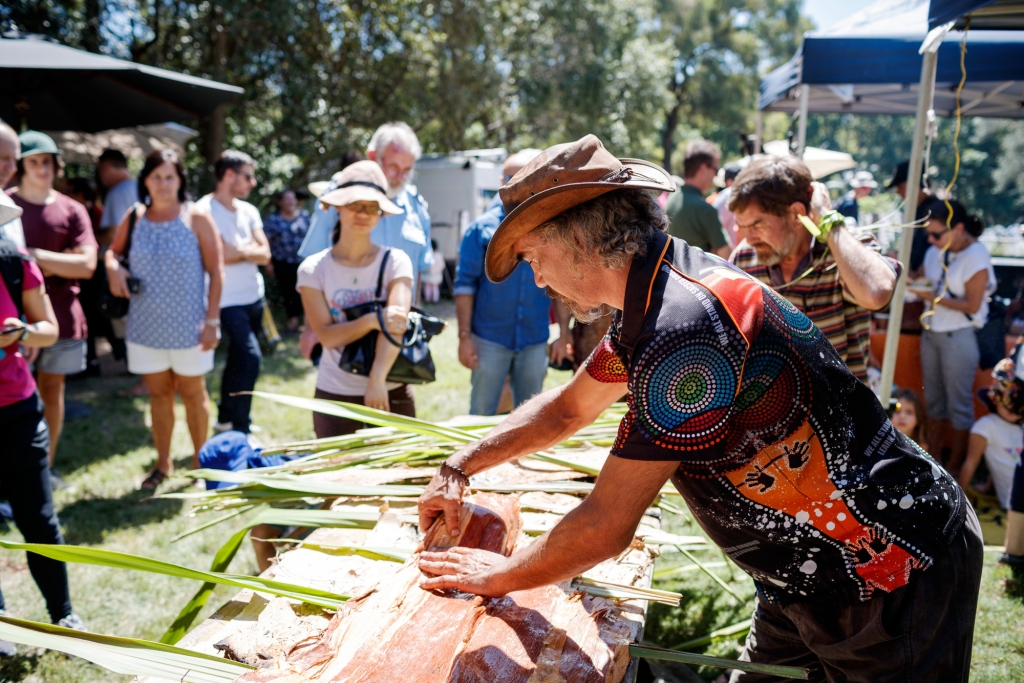
Fred, the Bush Tucker Man, demonstrating traditional cooking methods. Photo © James Horan for Sydney Living Museums
Good Tucker!
At this year’s Eel Festival the wonderful Fred Lindsey from Fred’s Bush Tucker will be demonstrating the way he prepares fresh eels, wrapping them in Gymea lily leaves and paperbark before roasting them on hot coals. They’re certainly “good tucker”!
An ancient practice
We will also be offering samples of smoked eel, sourced from lakes and estuaries in western Victoria. Eels have been a staple food and trade commodity for Aboriginal people in the region for millennia. The Gunditjmara built sophisticated aquaculture system built of ponds, channels and weirs, to take advantage of the eels that populated the local waterways around Lake Condah, and created a reliable food source. Some have been dated to 6,600 years – the oldest-known fish traps in the world – and were still in use when colonists arrived in the 1800s. This culturally manipulated area of the Budj Bim landscape is now listed on the Australian National Heritage Register. [1]
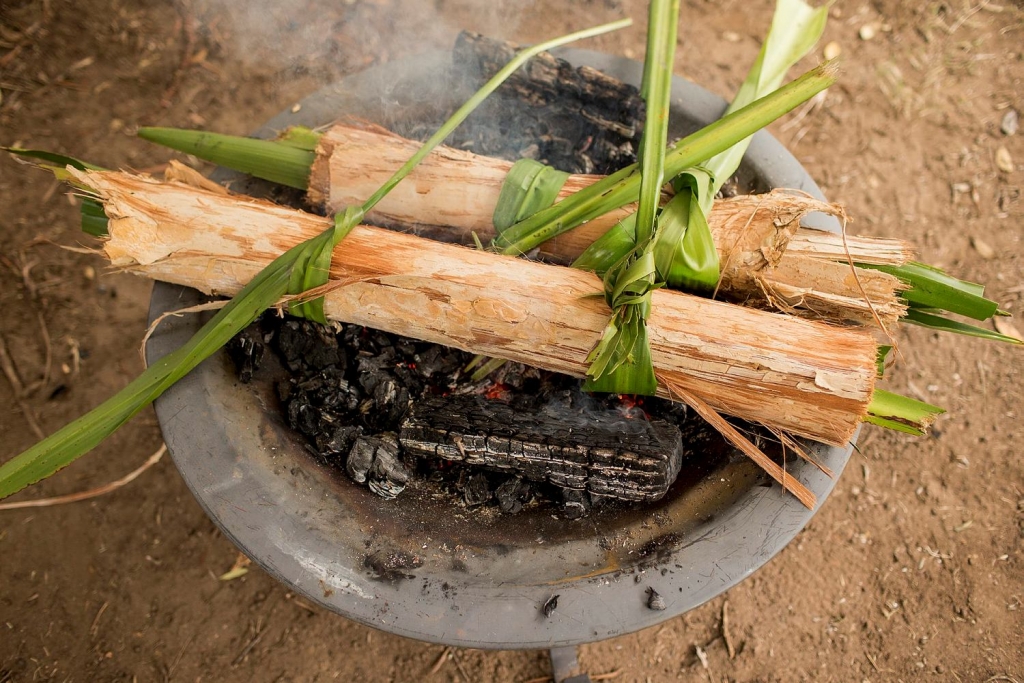
Eels wrapped in Gymea lilly leaves and paperbark roasting on the coals. Photo © James Horan for Sydney Living Museums
Smoke preservation
A number of burnt trees that were in close proximity to the ancient Gunditjmara fisheries led researchers to believe that they were used as smokehouses to preserve the eels, and when tested, soil samples from beneath the trees revealed traces of eel fat [2]. Hollows had been formed within the trunks, into which freshly caught eels would be hung over a smoking fire of dampened leaves from Blackwood trees [3]. The dry atmosphere created by the smoke helps dry out the flesh, and the natural chemicals released from smoke have antibacterial properties. This meant that eels could be preserved for use in the “off season” when eels returned to warmer waters in the wintertime, ensuring a year-round supply. It also enabled the eels to become a trading commodity, and be made available to people who did not have the same access to these delicious and nutritious aquatic animals.
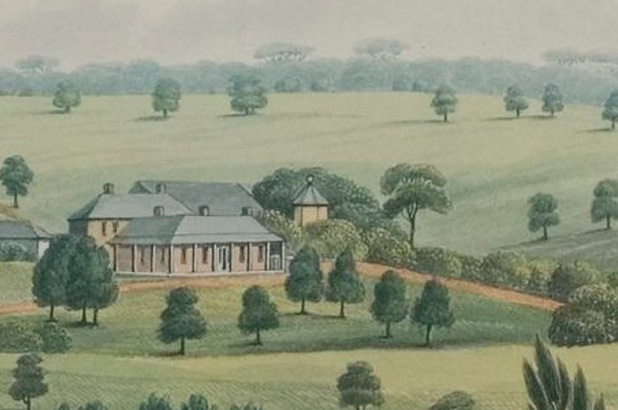
Elizabeth Farm (detail). Joseph Lycett 1825. Beat Knoblauch Collection
Shared techniques and tastes
There is no formal record of this process being employed by Darug people, but as an ancient craft, smoking was potentially a technique used to preserve fish and eels, in season.
Colonial settlers built smokehouses or simply used their chimneys to preserve meat and fish, and quite possibly, eels. A hexagonal smokehouse survives at the Macathur’s Camden property, Belgenny Farm, and a similar-looking structure features in an 1825 painting of Elizabeth Farm (above) – just peeking above the trees to the right of the house.
Eels were a familiar food for British colonisers. While working classes may have enjoyed them chopped into segments then boiled or crumbed and fried “nugget” style, “collared eel” was a fashionable dish in the early colonial period. Collared eel was recommended to Anna-Maria Macarthur in 1812, to serve at a “dinner for 12-14 persons”. How convenient to finding herself living along the Parramatta River – the place that means in some translations, “where eels lie down”.
Further Reading
[1] David Collins, 1798. An Account of the English Colony in New South Wales [Volume 1]. 1798.
[2] Ian McNiven, 2017. “The detective work behind the Budj Bim eel traps World Heritage bid” in The Conversation, February 8, 2017.
[3] Heather Builth, cited by Graham Phillips, 2003. “Secrets of the stones” in The Sydney Morning Herald March, 2003
[4] Karen Stichtenoth, 2006. “Once were eel farmers” in Monash Magazine, Monash University. May 2006.
[5] Ian J. McNiven and Damein Bell, 2010. “Fishers and Farmers: historicising the Gunditjmara freshwater fishery, western Victoria” in La Trobe Journal No.85 83-91.
[6] Bruce Pascoe, Dark Emu Black Seeds: agriculture or accident? Magabala Books. 2014
https://www.researchgate.net/publication/249869499_Environmental_and_cultural_change_on_the_Mt_Eccles_lava-flow_landscapes_of_southwest_Victoria_Australia (particularly smoking technique p414)
